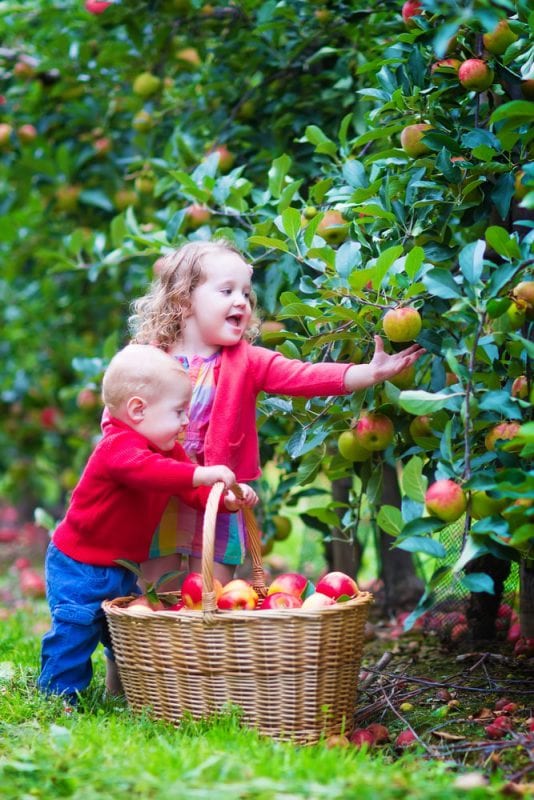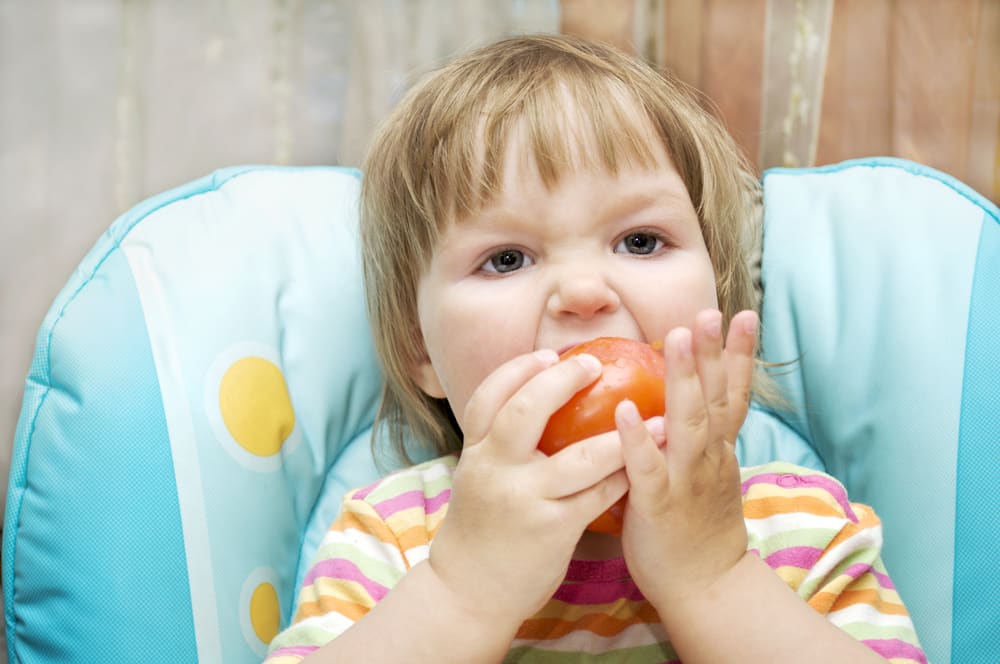Why do we eat the foods we do? And why are some foods elevated to the status of “comfort food?” Have you ever wondered why some of your parent’s and grandparents customs surrounding food live on?
In his essay, “From the Land,” Max Brooks explored his own connection to home-grown food and gave credit to his mother, Anne Bancroft. An avid gardener, Max learned to garden from his mother who made gardening and a taste for fresh food a family tradition. The traditional red sauce she simmered was infused with tomatoes and herbs and always included “at least one item from the land.” And she gardened like an experienced warrior ready for combat. As Max recalled, “Every night after dinner, the family went into the garden with flashlights and searched, captured, and exterminated “the nefarious cut worm.”
There was no question that the family, Mel Brooks and Anne Bancroft had the means to purchase fresh produce from any far-reaching market. Instead Anne maintained the tradition of gardening like her mother and her grandmother before her. It was that love of fresh produce, the time with mom, and the love of creating something tangible that inspired Max to adopt the garden as a tradition for his own family. As he wrote, the traditions were not just to feed his family. They were a way to remember.
I have also tried to create that tradition in our family. We have a blended family of thirteen chidren; and when my second husband and I forged our families, I implemented my traditions into the family. Each child, on his or her birthday, could request a special dinner. Spaghetti and meatballs, fragrant with basil, oregano, and lots of garlic was one favorite. So was French onion soup and cheesy French bread. But the all-time favorite in our family was hamburger gravy. Everyone loved hamburger gravy. Adopted from my years of living in a predominantly Mormon neighborhood of Salt Lake City, the dish was as common as funeral potatoes. It was warm, filling, and somewhat akin to the white sauce in chicken fried steak. To prepare, ground beef was browned and sprinkled with flour to create a roue. Margarine was added for fat, salt and pepper to taste, and chicken stock to cook down and thicken the flour. It was hardly an attractive dish and resembled slop on a plate. But served over a bed of mashed potatoes, it was heavenly.

My mother had made dozens of traditional foods in our home–brisket, chicken soup, blintzes, sweet and sour meatballs, and her twelve-egg sponge cake. To this day, I avoid brisket and on rare occasions, I’ll make a pot of chicken soup.. Occasionally break out the soup pot. But the one recipe I had to keep alive in my household was my mother’s poppy seed cake. It was a simple recipe posted on the side of the Solo Poppy Seed filling can. My mother’s cake, made traditionally in our house for the Jewish holidays in the Fall, tasted faintly of honey, and the cake was dense, moist, and addictive. While mine is never as good as my mom’s, a friend, an army Sargent who loved when I baked it during our stay at West Point claimed, “it was worth pissing hot for.”
So what about you? What foods have you adopted from your parents, from your grandparents? Which ones remind you of home, of family, and good times. Is it a grilled cheese served with a steaming bowl of tomato soup? Peanut butter sandwiches layered with toasted marshmallows? Or a simple, savory broth poured over a slice of toasted cheesy French bread?
What habits or tastes will your child develop because of your influence?
Many of these questions are explored in The Cassoulet Saved My Marriage, a collection of essays edited by Caroline Grant and Lisa Harper, maternally oriented authors in their own right. Each essay, from one author’s angst over her son’s picky eating habits to the annual cassoulet dinner that ultimately prevented one couple from signing divorce papers, describes the intertwined memories of food, flavor, and relationships.
So how does this relationship with food really begin. Tamar Adler, author of An Everlasting Meal: Cooking With Economy and Grace suggests that we first learn to eat as young children within the family unit. As our palate for solids expands, we expand our repertoire of tastes through our parents. Over time, Adler suggests that kids eventually branch out. Thanks to school lunches, social gatherings, and peer influences, kids begin to “gourmandism” or develop a taste for the finer things. It’s not that we train our children to seek out and eat truffles like a wild boar. Rather, we give them a foundation so they feel brave and daring enough to experiment on their own.
But, not all food choices are conscious ones. According to the National Institutes of Health, some foods a pregnant mother eats can flavor the amniotic fluid more strongly than others. Garlic, onion, strong spices are some that can do that. Research suggests that these foods can actually predispose the infant to develop certain preferences early on. For example, I once had a friend who hated bananas. She had always hated bananas and couldn’t remember a time when she didn’t detest them. As an adult, she found out that her mother, while pregnant, had had such a craving for bananas, she would eat nearly a dozen every day. On the other hand, I have never liked anchovies (save for a rare pregnancy-induced craving when I ate a salty fillets rolled with capers). My mother adored them. Although it could be, I’ll never know for sure.
As parents, how can we influence our childrens’ palettes in intentional ways? How can we create traditions around food that our children will always remember?
There are simple actions you can take early on.
Make dinner intentional. Eating food should be intentional, not something you gulp while driving in rush-hour traffic.. Your child should learn that dinner with the family is expected, a time to swap stories, decompress, and reconnect. It should be a time when your child is encouraged to embrace simple foods and love of family. If possible, you should encourage your children to propose meal suggestions and to cook. If they’re more invested in the cooking, if they learn how to experiment with food, they’ll be more apt to eat it.
Introduce healthy foods early on. As long as your child doesn’t battle with food allergies, you should slowly introduce fresh, healthy foods as early as possible. If your child is a picky or cautious eater, be patient and continue to introduce new foods on multiple occasions. Tastes change and over time, your child may develop a palate for some of the foods she didn’t like early on.
Eat the way you want your child to eat. If you serve peas to your child and but you eat a pint of ice cream in the family room, you’re probably undermining your child’s learning. If you want your child to eat salad, you better eat it too. This is especially true during the early years (0-5 years) when your child is looking to you as a role model.
Don’t forbid certain food. Okay, if your child has an anaphylactic nut allergy like mine do, forbidding nuts is perfectly reasonable. I’m taking about dessert and candy. Allow these on occasions. Even better, teach your child how to make desserts with fresh, healthy foods. Cooking is an activity that encourages tasting and eating. If your child develops a love of cooking, she will most certainly want to eat too.Dessert is fine now and then and if you teach your child how to make desserts with fresh, healthy foods, she will be more receptive to trying it and will remember the cooking time you spent together.
Make trips to a local pick-your-own farm. There is nothing as magical as a farm for a young child. The cows, horses, chickens, and the fruits and vegetables, normally presented on her plate are there to touch and smell. I still remember my 24 year old dripping red from juicy strawberries we had just picked at a farm. Encourage your child to taste the fruits and vegetables she picks. There is nothing like a fresh grape off the vine, corn off the stalk, or an apple plucked right off the tree.

Make cooking and eating enjoyable. A child should learn that eating and cooking together is precious and memorable. Eating food together is more about building relationships and less about the food. Your child will relish the memories with you for always and will want to reproduce them with her own children.
Discourage mood eating. If you’re child had a hard day, don’t sooth the sadness with a slice of apple pie. Emotional eating is a tough behavioral habit to break and one you certainly don’t want to encourage. In addition, if you’re an emotional eater and reach for those Hostess cupcakes during a frazzled moment, stop for a moment and wait it out. Again, if you’re an emotional eater, your child will take signals from you that it’s okay.
Make mealtime celebratory. Serve hamburgers and hotdogs at formal dinners. Decorate the table or kitchen to make it festive. Teach your kids how to make origami paper napkin shapes. Whatever rituals you employ, remember, they will be stored in the annals of your family’s history.
Found what you just read useful? Why not consider sending a donation to our Kars4Kids youth and educational programs. Or help us just by sharing!
